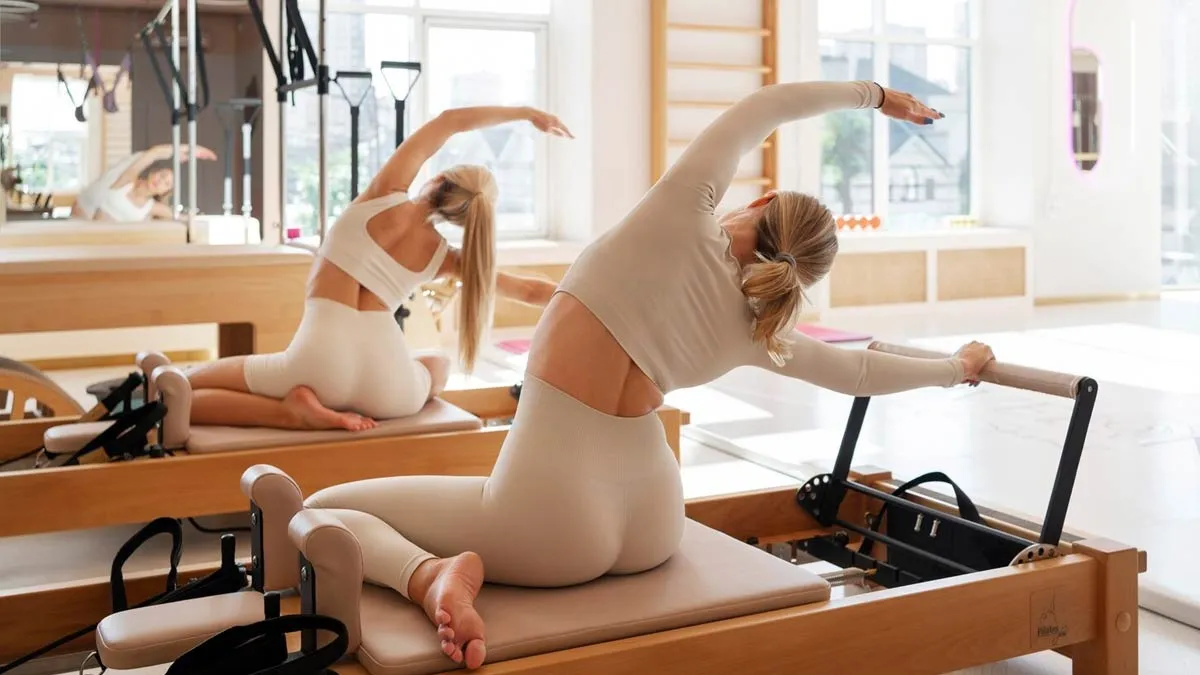
Pilates is the new buzzword, as some people like to say. But it’s far more than a passing fitness trend.
Unlike many workouts that focus on burning calories or building muscle in isolation, Pilates is a whole-body conditioning method that emphasises precision, control, and awareness. It may look calm on the outside, but it’s deeply challenging from within. It’s not about how fast you move, how sweaty you get, or how sore you feel; it’s about how well you move.
Table of Content:-
We spoke to Mitushi Ajmera, Nutritionist and Senior Master Fitness Trainer, who shared tips for beginners to experience a workout that’s joint-friendly yet deeply transformative.
1. What Is Pilates?

Pilates was originally called Contrology by Joseph Pilates in the early 1900s. The name speaks for itself—it’s a system of controlled movements that target deep stabilising muscles, especially around the spine and pelvis. After his death, Contrology was renamed Pilates as a tribute to its creator. This system develops strength, stability, mobility, and flexibility and encourages good posture and long-term injury prevention.
2. Precision Over Sloppy Movement
“Pilates is precision over sloppiness, control over jerky movement. Forget the mindless pace of aerobics or Zumba, Pilates is intentional, focused, and aligned. In this method, quality always beats quantity: two well-executed reps are more effective than ten careless ones,” said Ajmera.
A true Pilates session won’t let your mind drift to chores, kids, or office stress. Your instructor will lead each breath and posture cue to focus your undivided attention on your body. So, leave your to-do list at the door.
Also Read: Pilates Workout: Include These Exercises In Your Fitness Routine To Strengthen Your Core Muscles
3. Mat vs. Reformer: Where to Begin?
-1754980056769.jpg)
“Mat Pilates uses your body weight and is perfect for beginners. Reformer Pilates makes use of a spring-loaded machine that provides assistance or resistance depending on direction. Both work well, but mat Pilates can be practiced anywhere, not only studios,” advised Ajmera.
4. Dress for Movement
Dress in tight, stretchable clothing, nothing bulky with zippers or belts. Bare feet or grip socks are used in classes to keep control and alignment.
5. Form First, Always
It’s not about 'feeling the burn' or doing endless reps. It’s about alignment, control, and breath. In Pilates, movement follows the breath, not the other way around. You’ll learn to move with your inhale and exhale, building deeper control and reducing tension.
Also Read: 5 Forms Of Pilates Exercise and The Difference Between Them
6. Build Slowly and Mindfully
Even simple-looking exercises can wake up muscles you’ve never used. Start slow. Stay consistent. Two to three focused sessions a week are enough to see change.
7. A Stable Spine is the Fountain of Youth
Many believe a flexible spine is the goal, but in truth, a stable spine creates safe mobility. Stability brings resilience, not just range.
8. True Pilates: No Forceful Adjustments
In Pilates, movement should come from within. Instructors don’t force you into stretches. No aggressive hands-on adjustments—only light guidance if needed. The goal is internal control, not ‘achieve’ a position by external force.
Bottomline
Ajmera concluded, “Pilates is for everybody, regardless of age, fitness level, or flexibility. It strengthens you from the inside out and brings your mind into every movement.”
[Disclaimer: This article contains information provided by an expert and is for informational purposes only. Hence, we advise you to consult your professional if you are dealing with any health issue to avoid complications.]
Also watch this video
How we keep this article up to date:
We work with experts and keep a close eye on the latest in health and wellness. Whenever there is a new research or helpful information, we update our articles with accurate and useful advice.
Current Version
